SS304 or SUS SS304 stainless steel coil is the most versatile stainless steel. And we, Yaoyi, produce Ss304 stainless steel coils in accordance with the American standard ASTM. Generally speaking, the tensile strength of national standard ss304 should be greater than 515MPa. However, we can produce high-hardness ss304, and at the same time, the tensile strength is greater than 1000, even up to 1200MPa. Besides, we can clearly tell ss304 vs ss316, and provide ss304 with a thickness from 0.03mm to 3mm. Even if you have special requirements, thickness, hardness, and various surfaces, Yaoyi can meet your needs.
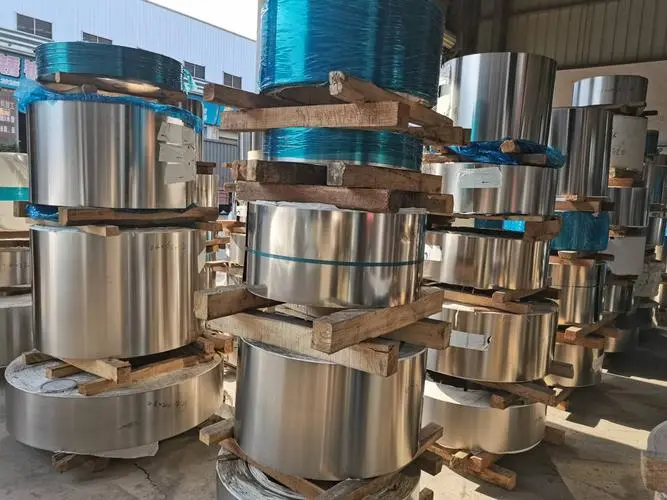
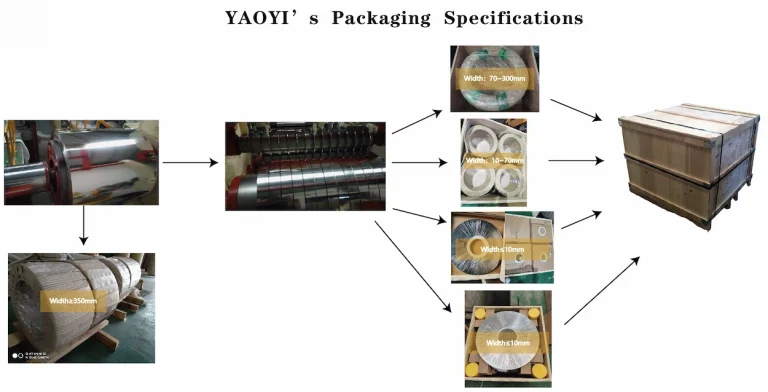
Stainless steel is widely used in several industries, from construction to food preparation. It is because of its great durability, anti-corrosion property, and workability as a material. However, did you know that there are different grades of stainless steel? One of the stainless steel grades that are usually used in various industries is SUS 304.
Stainless steel consists of different alloys like chromium, silicon, carbon, nickel, and so on. Depending on the composition, you can find different kinds of steel classified according to various grades.
Grade defines the stainless steel depending on what alloy it has, the quantity of alloy, its strength, properties, and so on. Thanks to that, people can find stainless steel that is suited for their needs.
If you are interested to know where to use SUS 304 and its properties, read on. All the information you will need is listed down here.
Stainless steel ss304 is commonly the most common stainless steel in austenitic use. It contains high nickel content, usually 8-10,5% by weight, and high chromium content by weight, at around 18-20%. Manganese, silicon, and carbon are other significant alloying elements. The remaining components of the chemical are mainly iron.
Thus, SS304 is the highest value for money in stainless steel quality. It costs between 250 and 300 rs per kg for raw material. SS316 is much more expensive than ss304, but it’s between 50 and 100 rs.
Grade ss304 is fully resistant to corrosion in the atmosphere. Cheaper SS grades such as 202 aren’t so good and crackable. Go to grade ss304, then.
Moreover, it has a widespread resistance to corrosion, resistance to heat, low thermal strength, and mechanical properties, strong working properties, such as stepping and bending, no phénomene of thermal treatment hardening, no non-magnetic temperature, and a temperature of usage of 193° C Positive 800° C.
Also, SS304 is the stainless steel most widely used. It contains a high nickel concentration from 8 to 10.5% and both chromium by weight from 18 to 20%. Silicium, manganese, and carbon are other widely used alloy components.
Form ss304 is the most flexible and commonly used of austenitic stainless steels, with its chromium-nickel content and low carbon content. All its alloys are 18% chromium alloys, 8% austenitic nickel alloys. Type ss304 is oxidation, corrosion, and durability resistant.
Moreover, oil applications most often use SS304. But colorization is a consideration that needs to be in recognition in sensitive applications such as pharmaceuticals or gas applications. SS316 is therefore in use in these applications.
ASTM A240 Material: Applications and Classifications
There are major contrasts in the range 202 and ss304 tempered sheets of steel in terms of nickel and chromium. 202 is chromium 16-18% and 0.5-4.0%, whereas ss304 has chromium between 18-20% and nickel between 8-10%. They are both austenitic and non-attractive, but by chance, they can turn out to be attractive.
However, when it comes to 316 hardened steel, you can foresee that chlorides should be better consumed and compared to ss304 treated steel and a greater degree of unity at elevated temperatures. You can expect the expansion of molybdenum to be minimal.
Also, nickel and chromium content are the key differences between 202 and 304 stainless steel sheets. 202 has 16% to 18% of chromium and 0.5% to 4% of nickel, while ss304 have 18% to 20% of chromium and 8% to 10% nickel. There are other minor variations of carbon, of 0.08%, of ss304% and 0.12%, of manganese, 2% in ss304 and 5.5-7.5% in 202, and slight differences in the contents of silicon, phosphorus, and molybdenum. Both are austenitic and fundamentally non-magnetic steels and, by working them, become momentarily magnetic.
Keep on reading:301 Stainless Steel Foil: Production, Application, and Packaging
The material content of ss304 met the grade of food according to the material. The market is from three types of standard quality food materials: 304, 316, and 430. Grade 304 stainless steel is usually in use with our kitchen appliances or water cups, some 316 with medical equipment, and some 430 with stainless steel cutting tools.
However, a definition must also be in clarification here. The substance is not the quality of food. It also requires whether the production and other ties meet the quality of foodstuffs.
The 304 ss is from the addition of some more molybdenum to the pitting resistance. The resistance to corrosion of 304 stainless steel and 316 stainless steel is almost identical in different water quality forms like distilling water, drinking water, river water, boiler water. However, if the medium’s chloride ion content is very great, 316 stainless steel is better suited.
Molybdenum and added nickel added to 316 are more pricy than ss304 stainless steel.
The carbon content of ss304L and 316L is lower than that of ss304 and 316. Also, there is a clear comparison in the material content table. Stainless steel rust is mainly information on the chromium-rich oxide film’s surface, but when the temperature is too high, intergranular corrosion will occur.
Therefore, less carbon content thus decreases intergranular corrosion in ss304L and 316L. Increased vulnerability to integrated corrosion does not imply a higher susceptible non-low carbon content to corrosion but even in high chlorine environments.
The following pages will introduce the basic roles and scope of use of all stainless steel materials. Rational use of their advantages and drawbacks would give us more benefit.
Read on: A Complete Guide to 201 Stainless Steel
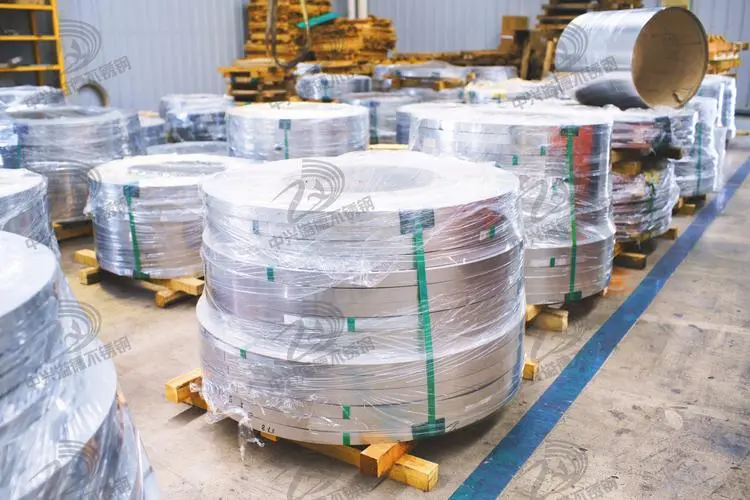
Here are some cases in which the best option can be ss304 stainless steel:
In short, it is necessary to carefully compare ss304 vs ss316.
Always Provides You with the BEST Austenitic Stainless Steel Products
The ss304 is a guideline only and does not provide the physical properties minimum or maximum values. If in the test according to the specification, the ss304 applies to the various ASTM, BS, etc. standards depending on the type of material being in evaluation. For example, such as 304 ss plates obey a different ASTM standard and vary in physical demands, while the ASTM standard will be in test on the SS304 rods with a different physical value. There are identical chemical compositions.
Keep reading: A Complete Guide to Steel Coil Suppliers
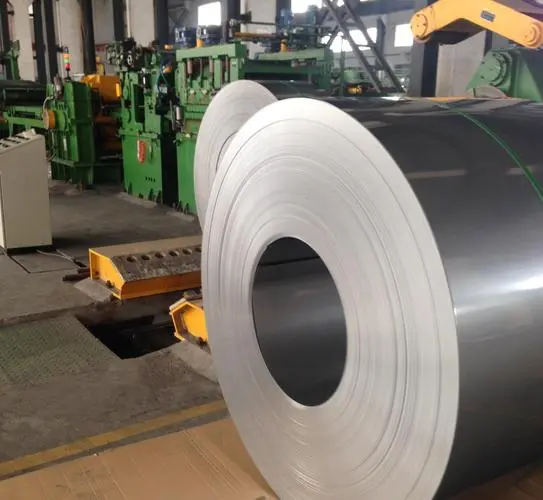
MIG welding is a semi-automatic welding procedure, mainly for CO2 protection purposes. MIG is British. American GMAW
Thus, MS or CS is all right with CO2 security with MIG. But CO2 gas screening or ss304 purging is not good because CO2 splits and carbon are in a collection by soldering metal at high temperatures. Also, this contributes to high carbon stainless steel and eventually becomes responsive and corrosive.
Therefore, it is easy to clean when surface deposits carbon or foodstuffs or organic matter. Often deep sensitization, the entire material is affected.
But, CO2 is not ideal for SS welding to control corrosion via the MIG welding process. Other inert gases such as argon and helium can be in use for safety. Better confirm with the manufacturer of MIG equipment.
The ss304 is generally to be non-corrosive, but the ambiance is critical during the welding process when the gas flow rate and the combination of gas used.
Besides, ss304 is called corrosion Weld decay which only happens when the people removed the local passive layer ( Chromium oxide). Moreover, this can be managed with tungsten in a limited quantity. In conventional cases, a low gas flow rate can occur, which causes such a defect.
Read more about A Complete Guide to Steel Coil Manufacturers
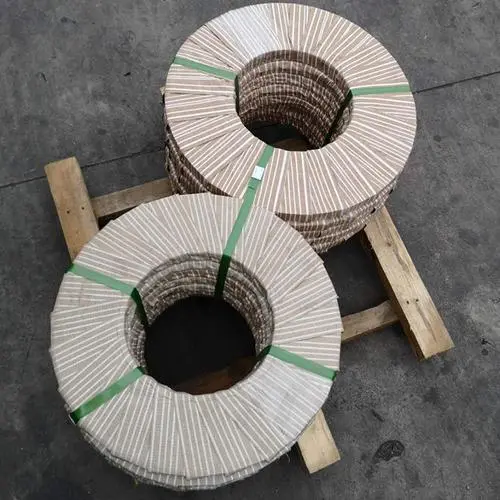
They are both brilliant and not magnet-specific in ss304 and SS316L. A simple examination cannot identify ss304 and SS316L. SS316L has around 2% Mo, and a corrosion test for hydrochloric acid may be used and is a poor test that does not indicate clearly how the test is detected.
It looks similar to ss304 and SS316L. They’re both non-magnetic as well.
As an alloying factor, SS316L has 2-3% molybdenum. You can use the molybdenum in certain chemical spot checks. The use of an XRF machine is another non-destructive method. It displays the Mo (molybdenum).
The portable XRF machines can also distinguish between copper and brass.
Moreover, we can use X-ray diffraction methods (handheld portable instruments) or better spark-spectrum analyzers if you need a more precise identification (stationary). Or chemical analysis in a laboratory for elements.
Try for free information about the A Complete Guide to Stainless Steel Price
SS is stainless steel and can mean any kind of Stainless Steel. That is — ferritic, austenitic, martensitic, duplex, hardness of precipitation, etc. However, it typically uses SS as a short form for ss304, 18 percent Cr and 8 percent Nickel, the most common austenitic stainless steel, and the rest is iron. The carbohydrates content is lowered to 0.08%, Mn to 2%, Sulphur and 0.035%, etc.
SS304 is the SS type, and over 100 stainless steel grades are available.
Stainless steels are a type of alloy steel consisting of 11 percent chromium and are often combined to resist corrosion with nickel or other alloys.
And 304 ss, specifically for food grade or ss304/l hospital supplies, 304 ss has 18% chromium, or 8% nickel with 2% molybdenum. 304 ss has 18% chromium.
Thus, all types of grades of ss are common in sheet metal work; sometimes also ss304 or 304 ss for grades of food or components of hospital equipment. And ss304 grades have higher costs for another grade, so we do not use it in sheet metalwork anywhere, too.
Both grades have different functions or use with a different combination of alloys according to their purpose.
Get A complete guide to A Complete Guide to 316 Stainless Steel Plate sheets
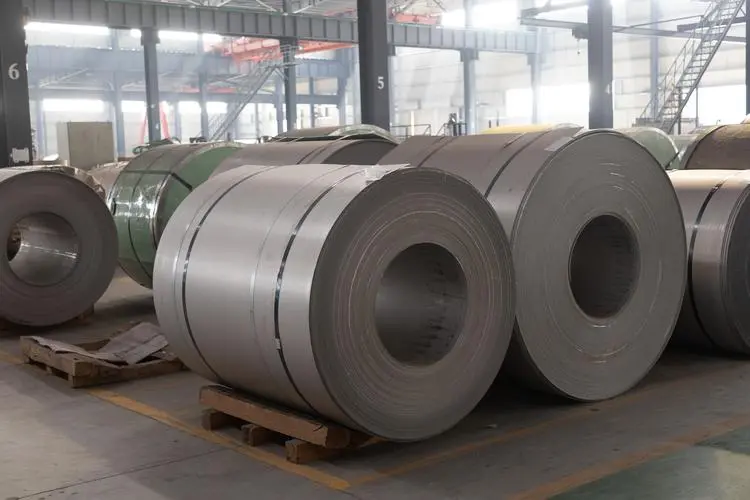
The SS304 stainless steel offers outstanding corrosion strength due to the heavy chromium and nickel concentrations. ss304 stainless steel popular applications include:
Refrigerator and washing machines such as appliances
Commercial machines for food processing
Attachment machines
Tubes
Exchangers of heat
Structures that corrode regular carbon steel in environments
The SUS 304 is a Japanese standard JIS stainless steel. The “SUS” designation means the material uses stainless steel. This steel is almost the same as other 304 stainless steel. The only difference is that it’s a standard grade employed in Japan.
It is a widely used stainless steel for chemical plants, paper making industry, vehicles, and kitchenware. This stainless steel consists of 18% chromium, 0.042% carbon, 0.004% Sulfur, 8% Nickel, and other material in minute quantities.
It has great corrosion resistance so that it won’t get damaged easily. This grade can also keep its strength and heat resistance in high and low temperatures. Besides that, it has great weldability, mechanical properties, and cold workability.
Try for free The application’s Guide to 301 Stainless Steel Strip
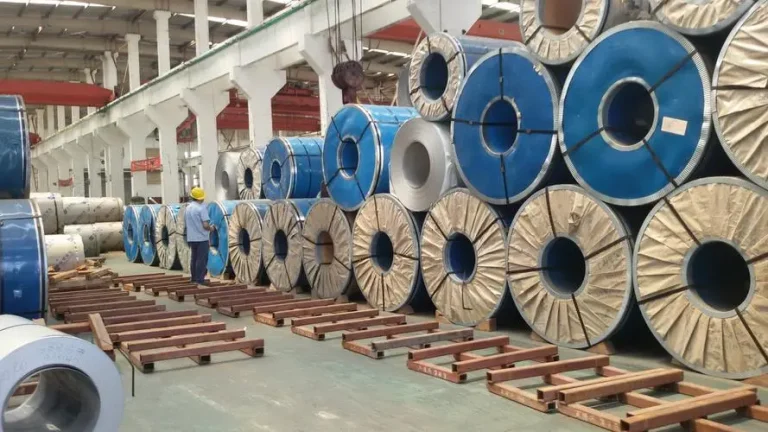
SUS 304 composition is almost the same as other 304 stainless steel. However, there is still some difference. To know more about it, please read on.
The SUS 304 stainless steel is a Chromium-nickel austenitic alloy since it has 18% chromium and 8% nickel. Austenitic structure stainless steel can easily retain its original structure even if the temperature is very low. Besides that, it will also have a high strength value, high-temperature resistance, and resistance to heavy load.
One of the SUS 304 stainless steel advantages over others is its great corrosion resistance in any atmosphere. It has chromium that helps protect it from getting rust, while nickel makes sure that it won’t get easily corrupted.
However, in a warm chloride environment, above 60 degrees celsius, this grade will easily get pitting, stresses, and crevice corrosion. It can resist corrosion from water with 200 mg of chloride per liter at room temperature.
For its physical properties, its density is 7.93, the same as other 304 stainless steel in the market. It has a melting point of 1,400 to 1,450 degrees Celsius and has 193 GPa of elastic modulus. For its electrical resistivity, its value is around 0.73. At the same time, its thermal expansion value is 16.3 (20-100°C), 17.8 (20-300℃), 18.4 (20-500℃). Lastly, the thermal conductivity value is 16.8 (100°C), which is relatively low compared with other steel grades.
The SUS304 stainless steel has a yield strength of ≥ 205 while its tensile strength is ≥ 520. At the same time, the elongation value is 40%. For the hardness, its Brinell hardness value is ≥ 187, while its HV hardness value is ≥ 200. These properties denote that this material is good for many industrial and medical applications.
Its weldability is also excellent, so employing it using the usual technique is no problem. Unlike other 304 grades, SUS 304 has high toughness, so it won’t easily crack at very high heat or cold temperature. However, it can contain intergranular corrosion, especially if big parts are welded together in a chlorine-containing medium.
Read on 316L Stainless Steel Properties
Industries define the workability of stainless steel as its ability to be transformed using various metal-working processes without forming cracks. In this regard, SUS 304 is one of the most used steel due to its outstanding workability.
Due to its toughness coupled with great weldability, it can withstand various fusion techniques without using filler metals. Manufacturers can also subject this steel grade to different metal processes in high or low temperatures, which only a few stainless steel grades can do without breaking.
Moreover, the workability and the strength of this stainless steel also increases in cold working or cryogenic processes. This feature is due to the occurrence of induced martensite in its composition and work hardening of austenite.
Additionally, industries know the SUS 304 as a model stainless steel for other grade material due to its ability to withstand cold working conditions. Other steel grades do not have this feature since they are fragile and susceptible to cracks in cryogenic environments.
Stainless steel usually undergoes heat treatment based on the need and steel type. Manufacturers do this to increase corrosion resistance and add strength and elasticity. Some of the heat treatment processes include hardening, stress relief annealing and are conducted during fabrication.
Industries do the heat treatment to produce hard stainless steel that can withstand abrasion stress and other physical stress. It is conducted under controlled conditions to prevent scaling, carburization, and decarburization.
For SUS 304, manufacturers apply heat treatment to achieve the highest corrosion resistance of this material. Manufacturers do this to ensure that the carbide will be fully dissolved and maintained at room temperature, resulting in a single-phase austenite composition.
The solution treatment for the heating treatment of SUS 304 is relatively high, ranging between 1050-1100 ℃. Manufacturers can adjust the temperature from time to time according to the monitored carbon content. Manufacturers also carefully subject the 304 steel to the preheating process before undergoing any heating and quenching process. This part is important since SUS 304 has a relatively low thermal conductivity.
Additionally, careful consideration is given for the holding time of the heating solution. The solution treatment usually undergoes a long holding time to avoid carburization. This technique is crucial to lowering the susceptibility of SUS 304 to intergranular corrosion.
After the heating treatment, the SUS 304 undergoes stress relief annealing at a lower temperature. Finally, the stainless steel will then undergo a stabilization process to complete the heat treatment method.
Learn more about Why Do Customers Choose Yaoyi to Test The 304 Stainless Steel Yield Strength?
You will see the SUS 304 used in most industrial applications. Industries use it in chemical plants, paper making industry, vehicles, kitchenware, and many more. Besides that, experts also use it for surgical instruments, decorations, electronic products, and machinery parts.
If you are going to check the two stainless steel grade compositions, you will see that it’s almost the same. The discrepancy of the alloy’s quantity used in each grade is very little or the same. Even its physical properties are almost identical. The only thing that differs between the two grades is that the SUS 304 is a Japanese standard steel grade.
Your best Chinese manufacturer of SS301
304 stainless steel is medical-grade since it has anti-corrosive property. Industries commonly use it in surgical instruments, but it’s not as good as other stainless steel grades like 316. Stainless steel grade 316 has molybdenum, which heightens its corrosive property better than 304. Its molybdenum features also help in resisting corrosion when it is exposed to saline solutions or chlorine.
SUS 304 stainless steel doesn’t have molybdenum, so it can easily rust when exposed to chlorine and saline. However, this grade still has great weldability and properties that is why its uses in other applications. Industry experts still use this in medicine but in applications where it won’t be exposed to acids or chlorine.
Why Choose Yaoyi to do the Stainless Steel Edging?
All austenitic steel is not magnetic since it has high chromium and nickel content like the 300 series. However, after it has undergone cold working like SUS 304, it can be slightly magnetic.
The term 18/8 is used to designate stainless steel based on its composition. Specifically, its chromium quantity is 18%, while its nickel is 8%. Hence the name 18/8. However, 18/8 steel grade is another form of 304 stainless steel. They are sometimes called interchangeably due to their similarities in physical, mechanical, and corrosive resistance.
SUS304 stainless steel has excellent mechanical properties and can be made even stronger through cold work. It is exceptionally weldable by all standard methods. This steel has a density of 7.93 g/cm3, a melting point of approximately 1400°C, and a tensile strength of 520 MPa.
Yes, SUS304 stainless steel is a popular material for faucets due to its corrosion resistance, durability, and excellent finish. These faucets are hygienic and easy to clean, making them suitable for use in kitchens and bathrooms. They can maintain their appearance for many years, even in high-use areas.
SUS304 stainless steel is an excellent material for lunch boxes as it’s food-safe, durable, and easy to clean. Its resistance to corrosion means that it won’t rust or degrade, even when used with acidic or salty foods.
Essentially, SUS304 and SS304 are the same material. SUS stands for Steel Use Stainless, which is a Japanese standard, while 304 is a grade specified in the American standard, AISI.
Yes, SUS304 stainless steel is considered safe for food preparation and storage. It is non-toxic and does not impart any flavors or colors to food.
While both SS304 and SS316 are types of stainless steel, the main difference lies in their composition. SS316 contains molybdenum, which gives it better resistance to corrosion, particularly in chloride environments such as sea water.
SUS is the abbreviation for the Japanese industrial standard for stainless steel, and SS is short for Stainless Steel, which is more commonly used in the west. There are different grades within these classifications, with numbers like 304 or 316, which refer to the specific composition of the alloy.
SUS 316 and SUS 304 are both types of stainless steel, but they have a few key differences in their composition. SUS 316 contains molybdenum, while SUS 304 does not. This makes SUS 316 more resistant to corrosion, particularly in chloride environments such as sea water. SUS 304, on the other hand, is known for its versatility and is used in a wider range of applications.
The difference between SUS 304 and SS 304 lies mainly in the standard they are referred to. SUS 304 refers to the Japanese standard for stainless steel, while SS 304 refers to the American standard, also known as AISI 304. The material properties of SUS 304 and SS 304 are the same.
In conclusion, SS304, or SUS304, is a very versatile stainless steel grade with excellent properties suitable for many applications. It offers high corrosion resistance, easy maintenance, and is safe for food contact, making it an excellent choice for a wide range of industries.
Unlike other metals, industry experts commonly use stainless steel because of its advantages. It also has different grades that help people know which one to use depending on what they want to do. You will find the SUS 304 here, including its properties, strength, and applications. Hopefully, the information you will find here about SUS 304 can help with the application you want to do.
If you have any more questions or concerns about SUS 304, please check it to the nearest stainless steel manufacturer in your area.